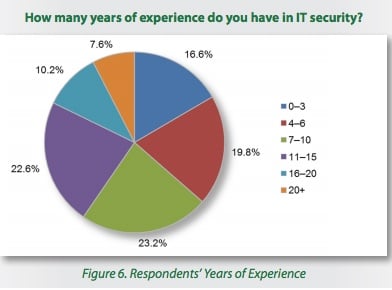
With Memorial Day comes the unofficial beginning of summer; time to break out the BBQ, beach towels and white pants and to slow down. Well, that’s all fine and well for the weekends or vacation, but it's not great for keeping your team up and running. Even if your business slows some in the summer months, it can be a challenge to keep employees running at speed.
While you can’t ignore the fact that the season has an effect on productivity, here are some ideas to keep thing running well.
Prepare for the Inevitable. 45% of Americans take their vacations in the summer. With that many people cycling in and out, employers need to plan ahead. Encourage managers and directors to set the vacation calendar for their teams long before the days start getting longer, that way they can be certain to account for any overlaps, or potential interference with critical deadlines.
It's also important to be certain to create an environment that encourages employees to take those vacation days. All too often employees are too stressed, or too worried about what they might find waiting for them at the office when they return, and so we wind up with only 25% of Americans actually taking the days they are entitled to.
If you want employees who are engaged and focused, foster an atmosphere that supports well-deserved time away.
Work On Your Flexibility. If you haven’t already, consider how to make work hours more accommodating during the summer. While not every company is in the position to offer a four day work week every other week from June through August, perhaps a 10/4 solution would be a better fit: employees work 10 hours a day for 4 days a week. However you manage it, providing some flexibility during the warm days will help cut down on “sick days” (don’t they always seem to happen on a Friday or a Monday?) and slowed productivity. Another way to approach it is to offer remote hours. Let Fridays be an optional telecommuting day -- just make certain you have the right technology in place to both ensure employees can be productive, and that all their work remains secure.
Consider Climate Control. The only thing worse than being stuck in a sweltering hot office on a long summer’s day, is being stuck in one that’s chilled to sub-arctic temperatures. And while the HVAC system for many buildings is centrally controlled, provide what fixes you can for your employees. If the central air is too cold and maintenance won’t heed your calls to turn it down some, give out sweatshirts with the company logo. Too hot? Bring in some auxiliary cooling units. Then too is the problem that what’s too cold for some is just right for others. You may not be able to create the perfect climate for everyone. But at the very least, polling your employees on their comfort level, shows that you care, and that goes a long way to mitigating their woes.
Take It Outside. If your location allows, arrange for lunch to be eaten outside. Schedule a weekly visit to the park, put out a picnic table under the tree, get some tables with umbrellas for the courtyard.
If your weekly staff meeting doesn’t demand the use of too much tech, find a spot outside where everyone can gather and do your weekly there. While getting work done is key, allowing some fresh air into a weekly meeting can help loosen up some new ideas.
Finding ways to encourage employees to get outside in the middle of the day not only helps to keep them focused and productive when they are in the office, it can also serve to increase the flow of ideas. Fresh air feeds both your employees and the company.
Call In The Caterers. Large companies cater lunch on a fairly regular basis for the simple reason that it keeps their workforce focused and productive. And while that may be beyond the means for smaller businesses, you can certainly do this on a smaller scale. Buy the team lunch one Friday a month, stock the break-room with cool drinks, keep the freezer stocked with ice cream or ice-pops. Arrange a Food Truck Friday either with a number of local food trucks, or a rotating calendar or favorites. Set up a sno-cone machine and keep a steady supply of ice. Consider what would appeal to your employees and treat them -- they’ll show their appreciation through the quality of their work.
Bring the Outdoors In. This is the perfect time of year to make some alterations to the physical plan. If you are overdue to rearrange the work space lay out, get it done now. New paint, new art, more plants and or flowers all go a long way to breathing new life into the office. Think of the office as you do your home, and lighten things up a bit.
Create New Challenges. Even if your business is one that slows in the summer, create new sales challenges or productivity contests. Just as you provide training and professional development throughout the year, take this time to encourage friendly competition. You can even throw in a physical challenge: The team member who can make the most calls AND log in the most miles on their bike wins! (Just make sure the quality of the prize reflects the level of engagement you’re looking for).
Rally the Team. There are countless ways to build team cohesion, but why not take advantage of the warm weather? Everything from creating a softball team to compete in a local league, to sponsoring a company wide volunteer opportunity serves to not only break up the day, but help define who you are as a company. Host a company picnic, provide transportation to a local beach, amusement park or river rafting trip. Take advantage of all your area has to offer, in so doing, give your employees a shared experience that builds both trust and cohesion.
Summer may challenge your employees focus and enthusiasm, but by making some easy changes to routine and the physical plant, you can help them keep their eye on the ball.
Related Blog:
5 REASONS YOU SHOULD INVEST IN EMPLOYEE DEVELOPMENT











.png?width=693&name=that%20Can%20Ruin%20Your%20INterview%20(1).png)

.png?width=688&name=5%20Ways%20to%20Fire%20Proof%20Your%20Career%20(1).png)

